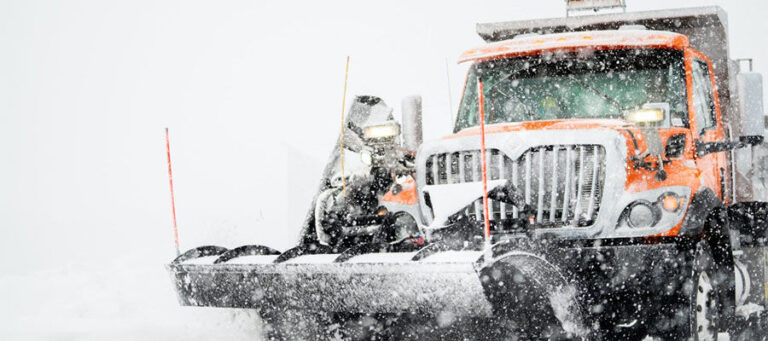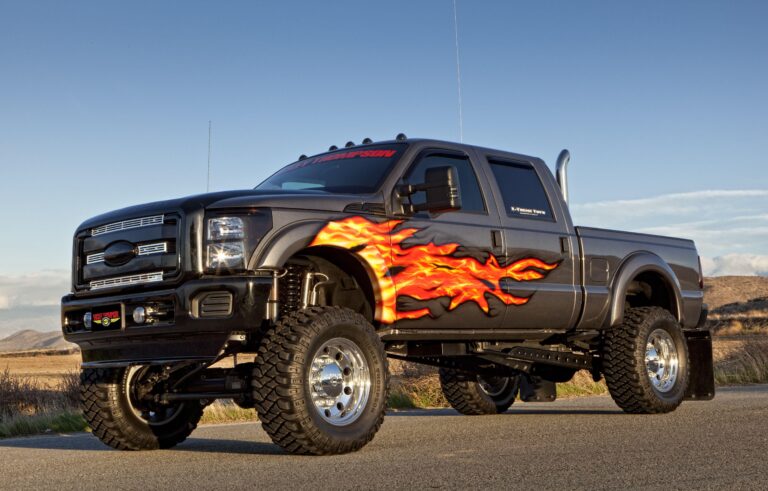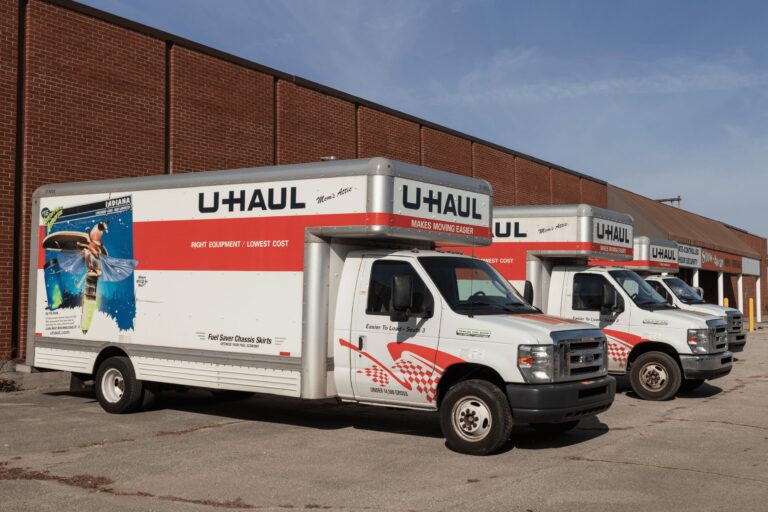Bale Bed Trucks For Sale: Your Comprehensive Guide to Efficient Hay Handling
Bale Bed Trucks For Sale: Your Comprehensive Guide to Efficient Hay Handling cars.truckstrend.com
In the agricultural world, efficiency isn’t just a buzzword; it’s the backbone of profitability. For livestock producers, hay growers, and anyone involved in the demanding task of moving large volumes of hay, the traditional methods of manual handling or front-end loaders can be time-consuming, labor-intensive, and even dangerous. This is where the bale bed truck emerges as an indispensable tool, revolutionizing the way hay is managed.
A bale bed truck is a specialized vehicle equipped with a flatbed body that integrates hydraulic arms or spikes designed specifically for lifting, transporting, and unrolling large round or square hay bales. Far more than just a modified pickup, these trucks are engineered to streamline the entire hay-handling process, allowing a single operator to accomplish tasks that would otherwise require multiple people or pieces of equipment. For farms and ranches of all sizes, investing in a bale bed truck can translate directly into significant savings in labor, time, and ultimately, operational costs, making the search for "Bale Bed Trucks For Sale" a priority for many.
Bale Bed Trucks For Sale: Your Comprehensive Guide to Efficient Hay Handling
Understanding Bale Bed Trucks: What Are They?
At its core, a bale bed truck combines the robust chassis of a heavy-duty pickup or flatbed truck with a purpose-built bed designed for hay handling. Unlike a standard flatbed that might require a separate tractor or loader to move bales, a bale bed is self-sufficient.
The key components of a bale bed include:
- The Flatbed: Typically constructed from steel or aluminum, providing a sturdy platform.
- Hydraulic System: The heart of the bale bed, powering the arms or spikes. This system can be powered by the truck’s Power Take-Off (PTO) unit or an independent electric over hydraulic pump.
- Bale Arms/Spikes: These are the mechanisms that physically engage with the hay bales.
- Arm Beds (Squeeze Beds): Feature two hydraulic arms that clamp around the bale, offering gentle and secure transport, minimizing damage. They are highly versatile for various bale sizes.
- Spike Beds (Spear Beds): Utilize one or more hydraulic spears that penetrate the bale, lifting it. While simpler and often more affordable, they can cause more damage to the bale if not operated carefully.

- Controls: Often located in the truck’s cab or on the side of the bed, allowing the operator to precisely maneuver the arms or spikes.
- Headache Rack: A protective barrier behind the cab, safeguarding the occupants from shifting loads.
- Integrated Features: Many bale beds come with additional features like gooseneck hitches, toolboxes, and integrated lighting for enhanced utility.

These specialized trucks transform hay moving from a multi-step, labor-intensive chore into a quick, efficient, and often single-person operation, making them an invaluable asset for modern agricultural enterprises.
The Indispensable Benefits of Owning a Bale Bed Truck
The advantages of integrating a bale bed truck into your operation extend far beyond mere convenience. They offer tangible benefits that impact profitability, safety, and efficiency:

- Unparalleled Efficiency and Time-Saving: The ability to pick up, transport, and drop off multiple bales without ever leaving the truck cab dramatically reduces the time spent on hay handling. What might take hours with a tractor and loader can be accomplished in a fraction of the time, freeing up valuable resources for other farm tasks.
- Significant Labor Reduction: A single operator can manage the entire hay-moving process. This eliminates the need for additional workers, reducing payroll expenses or reallocating labor to other critical areas of the farm.
- Enhanced Safety: Manually moving heavy hay bales is inherently risky, with potential for back injuries, crushing accidents, and slips. Bale bed trucks minimize human interaction with the bales, greatly reducing the risk of work-related injuries. Operating from the safety of the truck cab protects the operator from environmental hazards and physical strain.
- Versatility Beyond Hay: While primarily designed for hay, many bale beds can be used for moving other bulky items like feed, fence posts, pipe, or even small equipment. The integrated gooseneck hitch found on many models further expands their utility, allowing them to pull large trailers for livestock, machinery, or additional hay.
- Preservation of Hay Quality: Arm-style bale beds, in particular, handle bales gently, reducing the likelihood of tearing, dropping, or damaging the hay, which can lead to spoilage and economic loss.
- Improved Field Operations: With the ability to quickly distribute hay directly to livestock in pastures, bale bed trucks ensure consistent feed access, especially beneficial during winter months or drought conditions. Spinner beds can even unroll hay directly, saving time and equipment wear.
Key Considerations When Buying a Bale Bed Truck
Purchasing a bale bed truck is a significant investment that requires careful consideration. Here are the crucial factors to weigh:
- New vs. Used:
- New: Offers the latest technology, warranty, and customization options. Higher upfront cost.
- Used: More budget-friendly. Requires thorough inspection for wear, damage, and maintenance history. Can offer excellent value if a well-maintained unit is found.
- Truck Chassis Compatibility & Capacity:
- Truck Size: Bale beds are typically mounted on 3/4-ton, 1-ton, or even medium-duty chassis (e.g., Ford F-250/350/450, Ram 2500/3500/4500, Chevy/GMC 2500/3500/4500). Ensure the truck’s Gross Vehicle Weight Rating (GVWR) can safely handle the weight of the bale bed plus your typical bale load.
- Single Rear Wheel (SRW) vs. Dually (DRW): DRW trucks offer superior stability and payload capacity, highly recommended for heavier bale loads and better for pulling gooseneck trailers.
- Engine & Transmission: A robust diesel engine and heavy-duty automatic transmission are preferred for sustained heavy use and towing.
- Bale Capacity & Lift Power:
- How many bales do you typically move at once?
- What is the maximum weight of your bales (e.g., 1,500 lbs to 2,000 lbs for large rounds)?
- Ensure the bale bed’s hydraulic system and frame are rated to handle your specific needs.
- Hydraulic System Type:
- PTO-driven: More powerful and durable for continuous, heavy use. Requires a truck with a PTO unit.
- Electric over Hydraulic: Simpler to install, independent of the truck’s transmission. Good for lighter, intermittent use. Ensure the electrical system can support the demand.
- Bale Bed Features:
- Arm vs. Spike: Choose based on bale handling preference and budget.
- Bale Spinner: Essential if you plan to unroll hay for livestock.
- Integrated Gooseneck Hitch: A must-have for towing large trailers.
- Toolboxes & Storage: Convenient for chains, tools, and spare parts.
- Lighting: Adequate work lights are crucial for nighttime operations.
- Brand Reputation & Dealer Support: Research reputable manufacturers like DewEze, Hillsboro, Bradford Built, C&M, B&W, and others. Consider local dealer support for parts and service.
- Material & Durability: Steel offers robust strength; aluminum is lighter and corrosion-resistant but typically more expensive. Assess the quality of welds and overall construction.
- Budget: Set a realistic budget, factoring in not just the purchase price but also potential maintenance, registration, and insurance costs.
Types of Bale Beds and Their Applications
While the core function remains the same, bale beds come in a few distinct configurations, each suited for specific needs:
- Arm-Style (Squeeze) Bale Beds:
- Description: The most popular type, featuring two hydraulic arms that extend and retract to grasp the bale.
- Application: Ideal for most operations, especially those handling various sizes of round or large square bales. They provide gentle handling, minimizing damage to the hay. Excellent for stacking bales tightly.
- Spike-Style (Spear) Bale Beds:
- Description: Equipped with one or more hydraulic spears that pierce the center of the bale.
- Application: Simpler and often more cost-effective. Best for operations where bale integrity is less critical or for operators who prioritize lower initial investment. Can be more challenging for precise stacking.
- Spinner Bale Beds:
- Description: A specialized arm-style bed that includes a hydraulic motor to rotate the bale while it’s suspended.
- Application: Specifically designed for unrolling hay in pastures for livestock. This feature saves significant time and effort compared to unrolling bales manually or with a separate attachment.
- Dump Bale Beds:
- Description: Beds that can tilt or "dump" bales off the back, often combined with arm or spike features.
- Application: Useful for quickly shedding bales or for specific feeding strategies where bales need to be dropped rather than placed.
- Integrated vs. Standalone Units: Some bale bed trucks are sold as complete, factory-built units, while others are aftermarket beds installed onto a separate truck chassis. Both options are viable, with aftermarket installations offering more customization for existing trucks.
Tips for Finding the Right Bale Bed Truck For Sale
Finding the perfect bale bed truck involves a strategic search and diligent inspection.
- Explore Online Marketplaces:
- Specialized Farm Equipment Sites: TractorHouse.com, MachineryTrader.com, Farm and Ranch Exchange.
- General Classifieds: Craigslist, Facebook Marketplace (look for local farm groups).
- Auction Sites: BigIron, Ritchie Bros. (be prepared for "as-is" sales).
- Visit Dealerships: New and used truck dealerships, especially those specializing in agricultural or commercial vehicles, will often have a selection of bale bed trucks. They can also offer financing and warranty options.
- Network Locally: Talk to other farmers, ranchers, and hay operators in your area. Word-of-mouth referrals can lead to private sales or insights into reputable sellers.
- Thorough Inspection is Key (Especially for Used):
- Truck Chassis: Check for rust, frame damage, tire wear, engine leaks, transmission shifting (test drive!). Verify mileage and maintenance records.
- Bale Bed Frame: Look for cracks, bent steel, or poor welds.
- Hydraulics: Inspect hoses for leaks, listen for unusual noises from the pump, test all functions (lift, extend, retract, squeeze, spin). Check hydraulic fluid level and condition.
- Electrical: Test all lights, controls, and any integrated features.
- Pins & Bushings: Check for excessive wear in pivot points, which can indicate heavy use or lack of maintenance.
- Test Drive: Never buy without a test drive. Operate the bale bed with a bale if possible to fully assess its functionality under load.
- Verify Documentation: Ensure clear title, proof of ownership, and any available service records.
Challenges and Solutions
While bale bed trucks offer immense benefits, potential challenges do exist:
- High Upfront Cost: New bale bed trucks, especially fully equipped models, can be a substantial investment.
- Solution: Justify the cost by calculating projected labor savings, increased efficiency, and reduced equipment wear on other machinery. Explore financing options or consider a well-inspected used unit.
- Maintenance Requirements: The hydraulic system and moving parts require regular attention.
- Solution: Adhere to manufacturer-recommended maintenance schedules. Regularly check hydraulic fluid levels, grease all pivot points, inspect hoses for wear, and keep electrical connections clean. Basic preventative maintenance can significantly extend the life of the unit.
- Learning Curve for Operation: Safely operating the hydraulic controls and maneuvering with a large bale requires practice.
- Solution: Start with light loads in an open area. Practice until you’re comfortable and confident with all functions. Always be aware of your surroundings and overhead obstructions.
- Finding Specific Models/Features: The market for bale bed trucks can be regional, and specific features might be harder to locate.
- Solution: Broaden your search radius. Be patient, and consider working with a dealer who can source specific configurations for you. Sometimes, a slightly older model can be upgraded with desired features.
Bale Bed Trucks For Sale: Estimated Price Guide
The price of bale bed trucks varies widely based on whether you’re buying a new or used unit, the truck’s condition and features, the bale bed’s brand and capabilities, and market demand. The table below provides a general range; actual prices will fluctuate.
| Component / Type | Condition | Estimated Price Range (USD) | Key Factors Influencing Price |
|---|---|---|---|
| Bale Bed Only (Aftermarket) | New | $10,000 – $25,000+ | Brand, material (steel/aluminum), arm/spike, spinner, features (gooseneck, toolboxes), hydraulic type (PTO/electric) |
| Used | $3,000 – $15,000 | Age, condition, wear on hydraulics/frame, brand, features | |
| Complete Bale Bed Truck | New | $60,000 – $120,000+ | Truck model/trim, engine type, 2WD/4WD, bale bed features, brand, dealer options |
| Used | $20,000 – $80,000+ | Truck year, mileage, condition, engine/transmission health, bale bed age/condition/features, market demand | |
| Basic Spike Bed Only | New | $5,000 – $10,000 | Simpler design, fewer features |
| High-Capacity/Commercial Bed | New | $25,000 – $40,000+ | Heavy-duty construction, multiple bale capacity, advanced hydraulics |
Note: These are estimated ranges. Prices can be higher for premium brands, specialized features, or in regions with high demand. Always verify current market prices from multiple sources.
Frequently Asked Questions (FAQ) about Bale Bed Trucks
Q1: What is the average lifespan of a bale bed?
A1: With proper maintenance, a well-built bale bed can last 15-25 years or more, often outliving the truck chassis it’s mounted on. The hydraulic components are typically the first to show wear, but they are replaceable.
Q2: Can I install a bale bed on any truck?
A2: No. Bale beds are designed for heavy-duty pickup trucks (3/4-ton, 1-ton, or larger) with a robust frame and adequate payload capacity. The truck must be able to safely handle the weight of the bale bed plus the bales. Dually (DRW) trucks are highly recommended for stability and capacity.
Q3: How much does a bale bed weigh?
A3: The weight varies significantly by type, material, and features. A basic steel spike bed might weigh 1,500-2,500 lbs, while a full-featured steel arm bed with a gooseneck hitch can weigh 2,500-4,000 lbs or more. Aluminum beds are lighter but often more expensive.
Q4: What’s the main difference between arm beds and spike beds?
A4: Arm beds (squeeze beds) clamp around the bale, offering gentler handling and less damage to the hay, suitable for various bale sizes and stacking. Spike beds (spear beds) penetrate the bale, are generally simpler and cheaper, but can cause more damage to the bale itself.
Q5: Are electric over hydraulic bale beds good?
A5: Electric over hydraulic systems are convenient as they don’t require a PTO and can be installed on more trucks. They are good for lighter, intermittent use. However, for continuous, heavy-duty applications, a PTO-driven hydraulic system is generally preferred for its power and durability.
Q6: What kind of maintenance is required for a bale bed?
A6: Regular maintenance includes checking and topping off hydraulic fluid, greasing all pivot points and moving parts, inspecting hydraulic hoses for leaks or damage, checking electrical connections, and ensuring all lights are working. Also, regularly inspect the bed frame for cracks or signs of stress.
Q7: Can I use a bale bed truck for purposes other than hay?
A7: Absolutely! While their primary design is for hay, the flatbed design, often combined with an integrated gooseneck hitch, makes them highly versatile. They can be used for transporting feed bags, fencing materials, tools, small equipment, or pulling various trailers, making them a multi-purpose utility vehicle for the farm.
Conclusion
The search for "Bale Bed Trucks For Sale" is more than just looking for a piece of equipment; it’s an investment in the efficiency, safety, and productivity of your agricultural operation. By understanding the different types, key considerations, and practical tips for purchasing, you can make an informed decision that will positively impact your bottom line for years to come. A well-chosen bale bed truck is not just a vehicle; it’s a vital partner in the demanding yet rewarding world of farming and ranching, transforming the daunting task of hay handling into a streamlined, single-person operation. Embrace the power of specialized equipment and elevate your farm’s capabilities.





